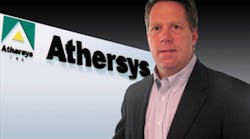Regenerative Medicine -- Expanding Medical Manufacturing
June 6, 2013
Voice your opinion!
Voice your opinion!
To join the conversation, and become an exclusive member of IndustryWeek, create an account today!
Sponsored
Sponsored
There exists a unique stem cell type that if isolated from healthy cells can grow and produce large quantities, which can be stored for five years, and eventually be administered to patients in an IV type of delivery system.
Athersys, Inc., based in Cleveland, Ohio, has developed MultiStem, a proprietary stem cell product that the company believes could be beneficial in the treatment of multiple diseases in cardiovascular, neurological, and inflammatory and immune areas.
MultiStem is able to reduce inflammation, protect damaged or injured tissue, and enhance the formation of new blood vessels in regions of ischemic injury. These cells exhibit a drug-like profile in that they act primarily through the production of multiple factors that regulate the immune system, protect damaged or injured cells, promote tissue repair and healing, and the cells are subsequently cleared from the body over time.
Over the past several years, the company has multiple programs in clinical development, with four clinical stage programs exploring the potential use of MultiStem to treat:
The category of treatment that uses protocols such as stem cells is called regenerative medicine. It represents health care related technologies that translate fundamental knowledge in biology, chemistry and physics into materials, devices and systems through a variety of therapeutic strategies that augment, repairs, replace or generate organs and tissues.
As evidenced by the wide application of this type of medicine to diseases that account for a large percentage of the U.S health care costs, Athersys CEO Gil Van Bokkelen estimates that when regenerative therapies are incorporated into clinical practice they can save $250 billion annually.
“This new technology can transform our healthcare system in that it can simultaneously provide better outcomes for patients, while lowering overall healthcare costs," said Van Bokkelen. “It is a solution that will go a long way toward addressing the very real needs of an aging population.”
The scope of these combined effects is driving Bokkelen, along with Michael Werner of the Alliance for Regenerative Medicine, to advocate for a national strategy on regenerative medicine. In a recently published whitepaper they point out that with 200 regenerative medicine products currently in clinical development, there should be a national strategy on how to move this field forward in an efficient manner.
Bokkelen and Werner identify some gaps in efficiency such as:
Some solutions to these issues include designating a national biomedical innovation advisor who can create a multi-agency task force between government agencies and industry.
Even with these unresolved public policy issues Athersys is looking toward the future. “We are engaged in preparations for the next stage of MultiStem clinical development, including planning and development to support manufacturing scale-up,” said Van Bokkelen.
